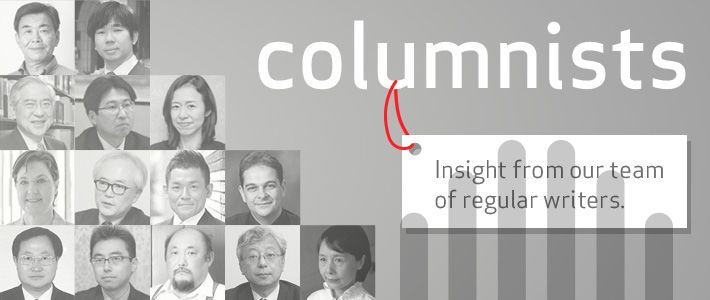
A Return to Basics for Japanese Education Policy
Culture- English
- 日本語
- 简体字
- 繁體字
- Français
- Español
- العربية
- Русский
Japanese education policy has often been compared to a pendulum, swinging back and forth between the two extremes of rote learning and a more relaxed, individualistic approach. Underlying this shifting personality are the vacillating priorities of the nation’s policymakers, who tend to respond to any hint of stagnation by treating education as the root of the problem, instigating educational reforms designed to lift the country back onto its feet.
At the moment, there is a shift away from the “room to grow” policy (yutori kyōiku in Japanese) that was introduced into the elementary and junior high school curriculum in 2002. Yutori kyōiku was designed to encourage individuality and initiative, and involved several cuts to the curriculum to accommodate the abandonment of Saturday classes and the shift to a five-day week. The latest reforms restore most of the material that was cut from the curriculum a decade ago. It seems that the pendulum is starting to swing away from yutori kyōiku and back toward cramming and rote learning. The new curriculum came into force in elementary schools last April; it comes into effect in junior high schools in April this year.
For the first few grades of elementary school, the number of hours devoted to reading and writing has been restored to nine hours a week. This brings it back to the same level as nineteen years ago, the highest ever in the postwar period. Under the new timetable a strong emphasis is placed on the foundational skills of reading and writing in the early years, and then in subsequent years the focus becomes teaching children the basics in science and mathematics. This approach reflects the Ministry of Education’s attempt to increase the number of hours spent on subjects in which progress can be easily measured by tests, thereby fending off criticisms that Japanese scores on such tests are falling.
In terms of the curriculum, much of the content that caused controversy when it was dropped during the previous round of revisions has now been restored. This includes the formula for calculating the area of a trapezoid, previously omitted from the elementary school mathematics curriculum, and knowledge of the Periodic Table, restored to the junior high school science curriculum. Some content has also been added to the curriculum for the first time. The number of English vocabulary terms that junior high school students are expected to master, for example, has been increased from 900 to 1,200 words.
The aim of the yutori kyōiku approach had been to foster a new kind of academic ability among students that would inspire them to pursue studies beyond the confines of the curriculum, discovering problems and solving them on their own. With the latest revisions, however, the focus has shifted firmly back to repetition and rote learning.
A Widening Gap in Standards
How can we account for the shift away from yutori kyōiku education? One factor is the OECD’s Program for International Student Assessment, in which Japan slipped from eighth place in 2000, to fourteenth in 2003. But this is not the only reason. The debate on the recent revisions took place during Abe Shinzō’s time as prime minister (September 2006–September 2007), a fact that had a considerable influence on the outcome. Abe was inspired by the educational reforms carried out in Britain under Margaret Thatcher. Abe thought that Japan could learn from the example of these reforms, which were believed to have helped lift Britain out of a prolonged economic slump often referred to as “the British disease.” Ironically, however, the British reforms drew heavily on the example of Japan, which was still enjoying steady economic growth at the time. Japan has thus taken a roundabout way back to its starting point—making an effort to learn from foreign examples only to wind up back at a Japanese source.
Elementary school teachers and administrators have already complained that classroom time has hardly increased at all, despite the reintroduction of virtually all the material previously cut from the curriculum. According to a survey carried out by a private-sector educational resources company, teachers are reporting a widening gap in students’ academic abilities. The yutori kyōiku approach aimed to build an education system that not only imparts knowledge to children, but also instills in them an ability to think and use that knowledge for themselves. With the present reforms, Japan seems as far away as ever from achieving this ambition. (Originally written in Japanese.)
(February 26, 2012)An International Comparison of Reading Comprehension Scores on the Program for International Student Assessment
| PISA 2000 | PISA 2003 | PISA 2006 | PISA 2009 | |
|---|---|---|---|---|
| 1 | Finland | Finland | Republic of Korea | Shanghai |
| 2 | Canada | Republic of Korea | Finland | Republic of Korea |
| 3 | New Zealand | Canada | Hong Kong | Finland |
| 4 | Australia | Australia | Canada | Hong Kong |
| 5 | Ireland | Lichtenstein | New Zealand | Singapore |
| 6 | Republic of Korea | New Zealand | Ireland | Canada |
| 7 | United Kingdom | Ireland | Australia | New Zealand |
| 8 | Japan | Sweden | Lichtenstein | Japan |
| 9 | Sweden | Netherlands | Poland | Australia |
| 10 | Austria | Hong Kong | Sweden | Netherlands |
| 11 | Belgium | Belgium | Netherlands | Belgium |
| 12 | Iceland | Norway | Belgium | Norway |
| 13 | Norway | Switzerland | Estonia | Estonia |
| 14 | France | Japan | Switzerland | Switzerland |
| 15 | United States | Macao | Japan | Poland |
education academic NHK yutori school curriculum rote Abe Shinzo attainment education reform Hayakawa Nobuo cramming